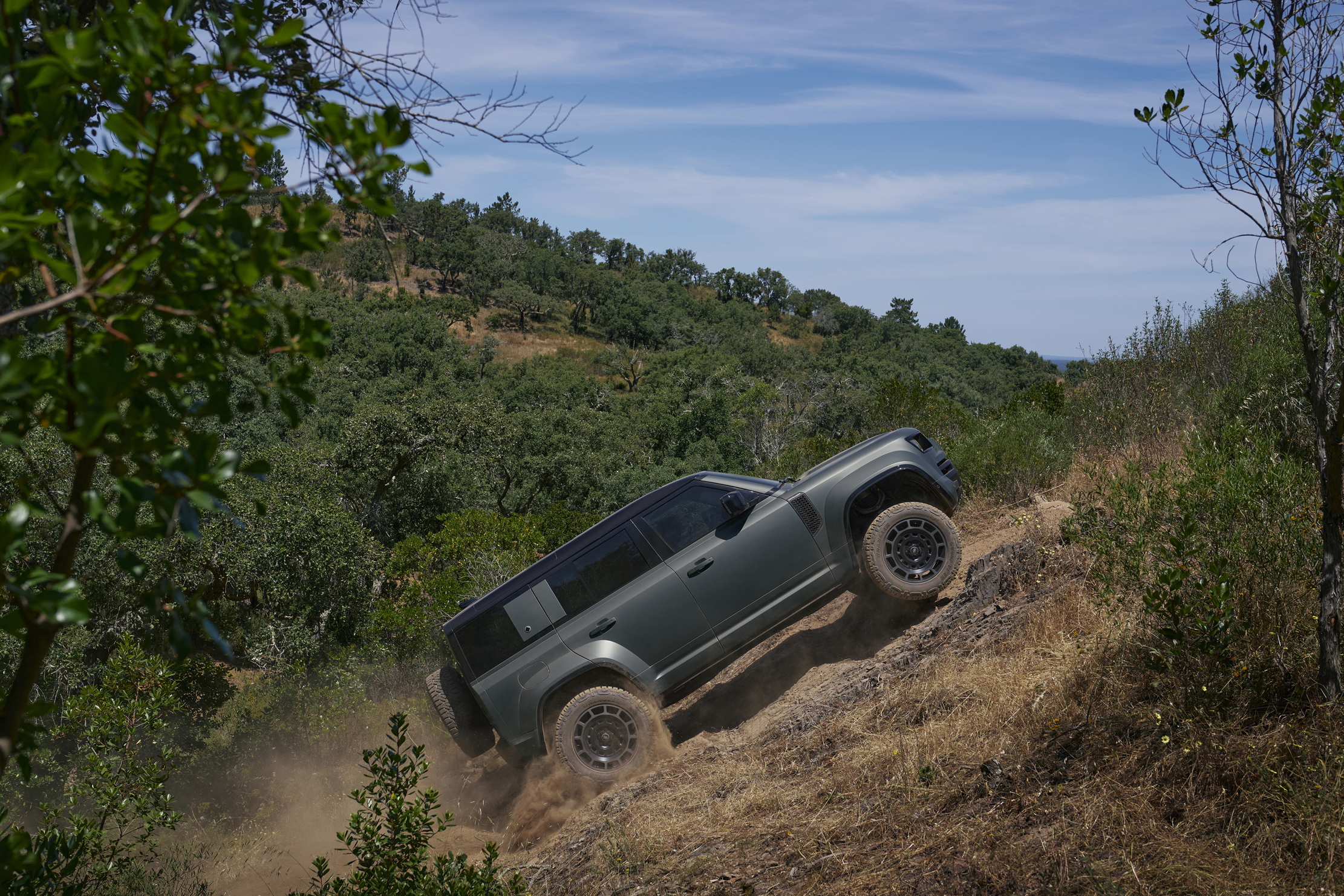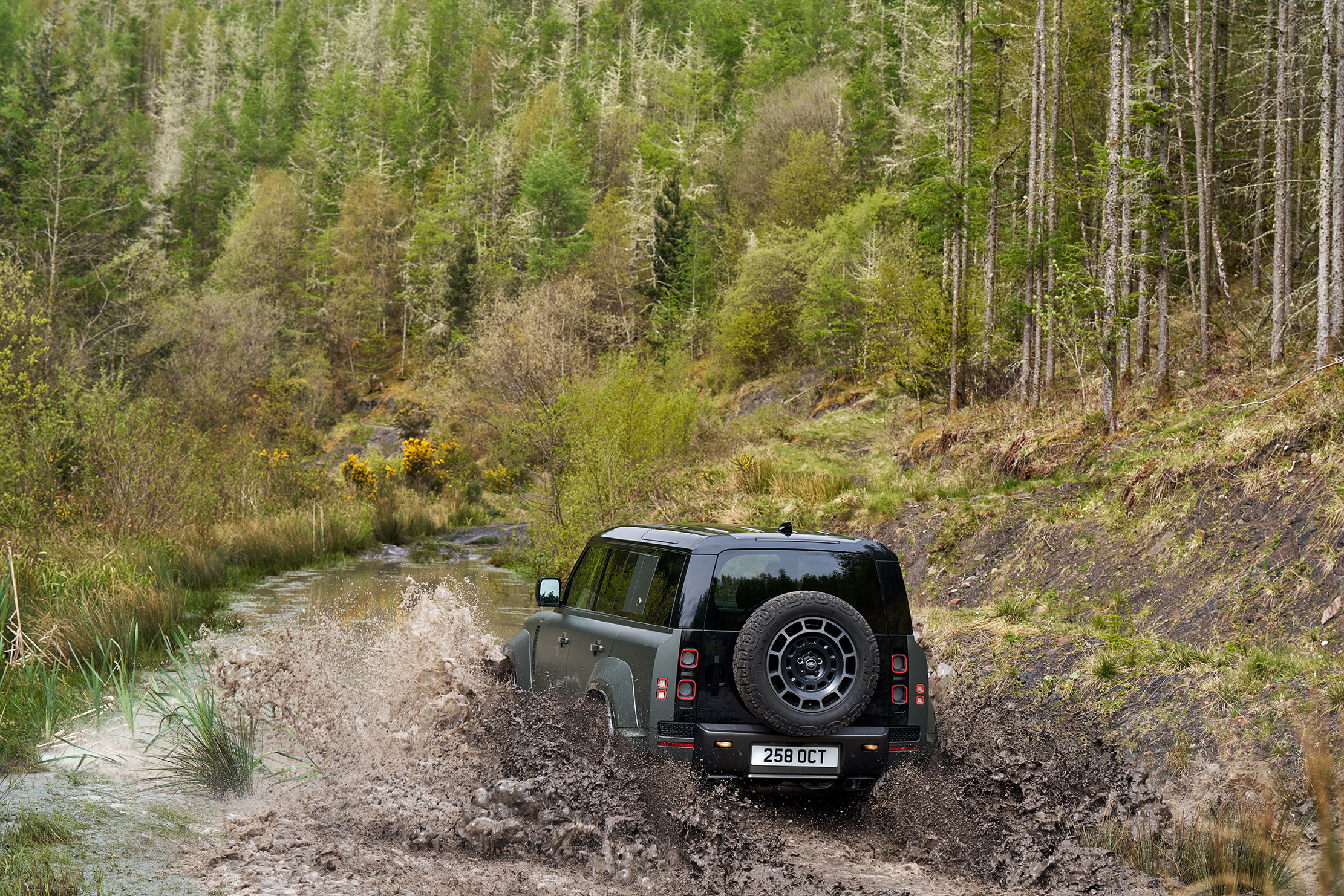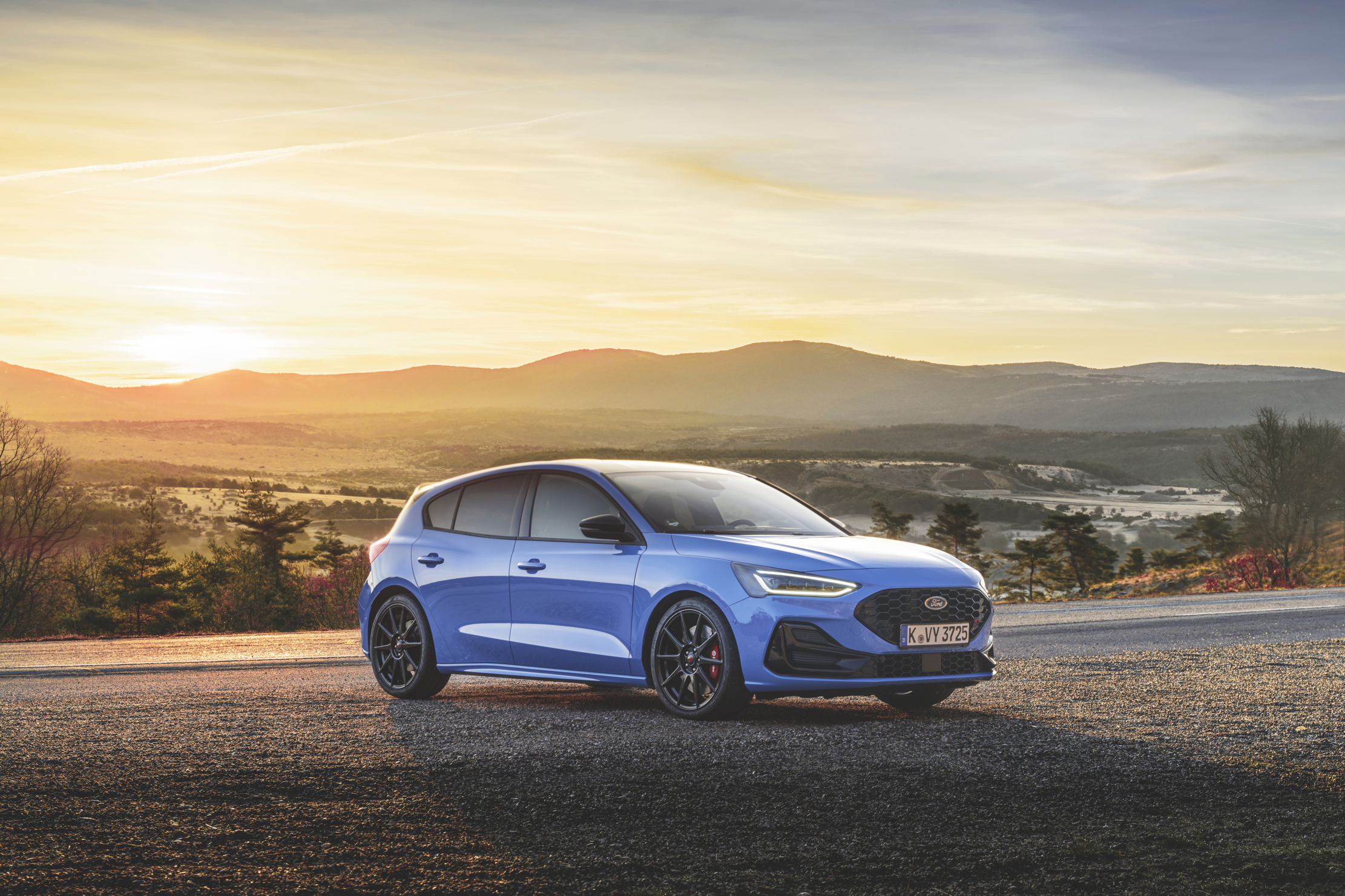Defender OCTA: Land Rover's classic car, reimagined. And then reimagined again, with 626BHP
Why did Land Rover stick a 4.4 litre twin-turbo V8 in a Defender? Because why not.


Take one look at the Defender OCTA and you know it means business. Its flared arches protrude aggressively from its squared bodywork, hugging its huge off-road tyres. A swollen bonnet hump hints at the large V8 underneath, as does the larger front grille, designed to increase cooling. A stealthy matte paint job adds villainy.
All of this visual trickery isn’t quite enough to reveal the car’s true plans for on and off-road dominance though. The OCTA’s design is, dare we say it, subtle compared to the staggering performance it offers on any terrain. It is the most powerful, fastest and most capable Defender of all time, and it is here to rip the ultimate SUV crown from the likes of Mercedes-Benz, Lamborghini and Porsche.
Land Rovers have always been the off-roader of choice for those after hardworking, reliable machinery. The original Series I was developed as a slightly more civilised, road-friendly alternative to the Willy’s Jeep. It was the first mass-produced four-wheel drive car and became the template that all other off-roaders would follow. It was one of Britain’s greatest exports, beloved by farmers and royalty. The Queen owned several over the decades, and Winston Churchill chose to be chauffeured in one around his estate. His came modified from the factory, with an extra wide armchair passenger seat to accommodate his size, as well as leather-clad handrails and a footwell heater.

Churchill might have been ahead of his time with these mods. Comfort was never Land Rover’s strong point, and this continued with the introduction of the Defender in 1983, despite the addition of softer coil spring suspension and a radio. But it is a key attraction of the new Defender, launched in 2020, which might have lost some of the basic ruggedness of the original, but gained with all-round drivability and heated seats. The OCTA takes everything JLR has learned over the past eight decades, combining a new level of performance expected of the Defender, with the luxury elements and comfort usually associated with Range Rover.
It very much feels like a ‘why not?’ kind of car. It’s JLR flexing its engineering capabilities at a time when extreme performance, luxury SUVs have never been more popular. Every big name manufacturer is producing them. Range Rover’s own Sport SV is one of the key players, as is Bentley and its Bentayga, the Lamborghini Urus, Mercedes-AMG G 63 and the BMW XM. There is the Porsche Cayenne GT, a 650bhp monster. And two of the most powerful: the Aston Martin DBX 707 with 707bhp, and the 715bhp Ferrari Purosangue.
The OCTA isn’t the most powerful of the bunch. It has 626 bhp and 750Nm of torque from its 4.4-litre twin turbo mild-hybrid V8. This is good enough for a 0-60mph time of 3.8 seconds, a rapid figure considering the car’s 2510kg mass. But where the others are more road focussed, the Defender is all about its breadth of ability. It’s a car that is dynamically capable on the road, but also at home on a mountain-side, a muddy hill or, as I find out, in a river.
On the road: Land Rover Defender OCTA
Price: £148,045
MPG: 21 (WLTP)
Power: 626bhp
0-60: 3.8 seconds
Top speed: 155mph
To question why this car has been put into production might be missing the point. Nobody really needs a 626bhp Defender, after all. Nobody needs a 700bhp convertible supercar either. This is a car JLR has made because it can. It will also form the basis for Land Rover’s works entry into next year’s World Rally-Raid Championship, which includes the legendary Dakar Rally, showing how confident they are with the package.
Sign up for the Country Life Newsletter
Exquisite houses, the beauty of Nature, and how to get the most from your life, straight to your inbox.
For the 2026 season, Land Rover will be competing ‘with a three-car Defender works team entry’, says Mark Cameron, Defender managing director. ‘We have chosen to compete in the “Stock” category to showcase the toughness and dependability of the production Defender.’
As the ultimate rendition of Defender, the OCTA is intimidating to look at. But get behind the wheel and any tension dissipates quickly. It’s big and powerful, but extraordinarily easy to drive around town, and visibility is good from the tall, upright driving position, allowing you to place the car accurately down narrow roads. Leave the driver mode in ‘comfort’ and it feels like a regular commuter, albeit one with ‘chopped’ carbon fibre inserts and expensive leather armchair seats that Churchill would surely approve of.

Dial things up a notch to ‘dynamic’ mode and the car sinks into a more aggressive, firmer stance, the suspension tightening up and the steering and throttle response sharpening. The big V8 comes to life, providing a raw, old school burble that begs to be drawn out to the redline. It is fast and can overtake anything on the road. The suspension is the star though. The 6D Dynamics set up comes with pitch and roll control, which essentially keeps the car flat through corners, eliminating body roll.
Crank it up further into OCTA mode and things get really wild. Designed specifically for off-road use, it unlocks a special launch control that optimises acceleration on loose surfaces, while also tweaking the ABS for better braking feel. It turns it into an oversized rally car, allowing for controlled drifts that inspire confidence in the driver.
It can go slowly off-road too. On my test drive in the Scottish Borders I traversed rocks, impossible muddy climbs and drove through a river. It has a wading depth of one metre, which will make light work of the autumn floods. Land Rover’s engineers reckon it’s the most capable off-roader in the company’s history, which is saying something. In short, there isn’t much it can’t do, and while it won’t save you any money with its £148,045 price tag, you’d be hard pressed to have more fun on four wheels.
Charlie Thomas is a freelance writer, journalist and photographer. His work is an extension of his interests and hobbies, which include travel, motoring and style. Growing up in Folkestone, Kent and now based in London, an appreciation of design was developed at an early age thanks to his father and uncle, while a love of storytelling sees him seek out interesting features around the world. His writing and photos can be found in titles including HTSI, GQ, The Times, The Telegraph and Robb Report.
-
 Six rural properties with space, charm and endless views, as seen in Country Life
Six rural properties with space, charm and endless views, as seen in Country LifeWe take a look at some of the best houses to come to the market via Country Life in the past week.
By Toby Keel
-
 Exploring the countryside is essential for our wellbeing, but Right to Roam is going backwards
Exploring the countryside is essential for our wellbeing, but Right to Roam is going backwardsCampaigners in England often point to Scotland as an example of how brilliantly Right to Roam works, but it's not all it's cracked up to be, says Patrick Galbraith.
By Patrick Galbraith
-
 Materials, textures, construction, expression: A Brutalist watch on your wrist
Materials, textures, construction, expression: A Brutalist watch on your wristLuxury watchmakers are seeking to bridge the gap between two contrasting styles, with exciting results.
By Chris Hall
-
 Folio, Folio, wherefore art thou Folio? Shakespeare set to be auctioned by Sotheby's
Folio, Folio, wherefore art thou Folio? Shakespeare set to be auctioned by Sotheby'sFour Folios will be auctioned in London on May 23, with an estimate of £3.5–£4.5 million for 'the most significant publication in the history of English literature'.
By Lotte Brundle
-
 Curators, art historians and other creative minds share their pick of J. M. W Turner's best works, on the 250th anniversary of his birth
Curators, art historians and other creative minds share their pick of J. M. W Turner's best works, on the 250th anniversary of his birthCold moonlight, golden sunset and shimmering waters are only three reasons to love Turner. On the 250th anniversary of his birth, curators, art historians and other creative minds reveal which of his paintings they’d hang on their walls and why.
By Carla Passino
-
 Boxy but foxy: How the humble Fiat Panda became motoring's least-likely design classic
Boxy but foxy: How the humble Fiat Panda became motoring's least-likely design classicGianni Agnelli's Fiat Panda 4x4 Trekking is currently for sale with RM Sotheby's.
By Simon Mills
-
 The coveted Hermès Birkin bag is a safer investment than gold — and several rare editions are being auctioned off by Christie’s
The coveted Hermès Birkin bag is a safer investment than gold — and several rare editions are being auctioned off by Christie’sThere are only 200,000 Birkin bags in circulation which has helped push prices of second-hand ones up.
By Lotte Brundle
-
 Ford Focus ST: So long, and thanks for all the fun
Ford Focus ST: So long, and thanks for all the funFrom November, the Ford Focus will be no more. We say goodbye to the ultimate boy racer.
By Matthew MacConnell
-
 Splash! A Century of Swimming and Style: A whistle-stop history, from the Roman Baths to Hampstead Heath
Splash! A Century of Swimming and Style: A whistle-stop history, from the Roman Baths to Hampstead HeathEmma Hughes dives into swimming's hidden depths at the Design Museum's exhibit in London.
By Emma Hughes
-
 Diamonds are everyone's best friend: The enduring appeal of one of Nature's sparkliest treasures
Diamonds are everyone's best friend: The enduring appeal of one of Nature's sparkliest treasuresEvery diamond has a story to tell and each of us deserves to fall in love with one.
By Jonathan Self